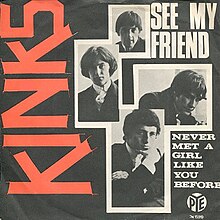
"Norwegian Wood (This Bird Has Flown)" otherwise known as simply "Norwegian Wood", is a song by the English rock band the Beatles from their 1965 album Rubber Soul. It was written mainly by John Lennon, with lyrical contributions from Paul McCartney, and credited to the Lennon–McCartney songwriting partnership. Influenced by the introspective lyrics of Bob Dylan, the song is considered a milestone in the Beatles' development as songwriters. The track features a sitar part, played by lead guitarist George Harrison, that marked the first appearance of the Indian string instrument on a Western rock recording. The song was a number 1 hit in Australia when released on a single there in 1966, coupled with "Nowhere Man".
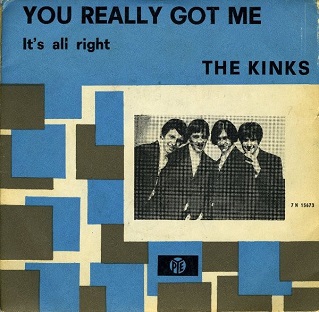
"You Really Got Me" is a song by English rock band the Kinks, written by frontman Ray Davies. The song, originally performed in a more blues-orientated style, was inspired by artists such as Lead Belly and Big Bill Broonzy. Two versions were recorded, with the second performance used for the final single. Although it was rumoured that future Led Zeppelin guitarist Jimmy Page had performed the song's guitar solo, this has been debunked.

Face to Face is the fourth studio album by the English rock band the Kinks, released on 28 October 1966. The album marked a shift from the hard-driving style of beat music that had catapulted the group to international acclaim in 1964, instead drawing heavily from baroque pop and music hall. It is their first album consisting entirely of Ray Davies compositions, and has also been regarded by critics as one of rock's first concept albums. Davies' blossoming songwriting style became increasingly observational and satirical, commenting on English culture, social class and the music industry.

The Kinks Are the Village Green Preservation Society is the sixth studio album by the English rock band the Kinks. Released on 22 November 1968, Village Green is regarded by commentators as an early concept album. A modest seller on release, it was the band's first studio album which failed to chart in either the United Kingdom or United States, but was lauded by contemporary critics for its songwriting. It was embraced by America's new underground rock press, completing the Kinks' transformation from mid-1960s pop hitmakers to critically favoured cult band.

Kinks is the debut studio album by the English rock band the Kinks. It was released on 2 October 1964 in the United Kingdom by Pye Records. The original United States release, issued by Reprise Records on 25 November 1964, omits three tracks and is instead titled You Really Got Me.

Raga rock is rock or pop music with a pronounced Indian influence, either in its construction, its timbre, or its use of Indian musical instruments, such as the sitar and tabla. In addition, rock music from the 1960s and 1970s that incorporates South Asian musical influences and instruments, along with Western ideas of the Indian subcontinent, is often regarded as raga rock.
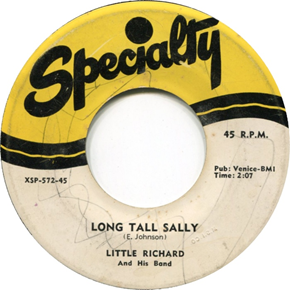
"Long Tall Sally", also known as "Long Tall Sally (The Thing)", is a rock and roll song written by Robert "Bumps" Blackwell, Enotris Johnson, and Little Richard. Richard recorded it for Specialty Records, which released it as a single in March 1956, backed with "Slippin' and Slidin'".

The Kinks were an English rock band formed in London in 1963 by brothers Ray and Dave Davies. They are regarded as one of the most influential rock bands of the 1960s. The band emerged during the height of British rhythm and blues and Merseybeat, and were briefly part of the British Invasion of the United States until their touring ban in 1965. Their third single, the Ray Davies-penned "You Really Got Me", became an international hit, topping the charts in the United Kingdom and reaching the Top 10 in the United States.

While the sitar had earlier been used in jazz and Indian film music, it was from the 1960s onwards that various pop artists in the Western world began to experiment with incorporating the sitar, a classical Indian stringed instrument, within their compositions.
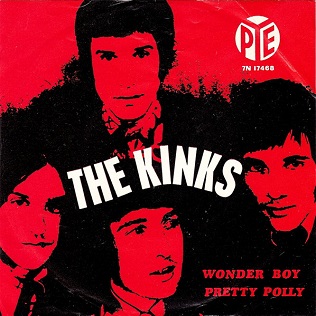
"Wonderboy" is a song by the English rock band the Kinks, released as a single in 1968. It stalled at number 36 in the UK charts, becoming the band's first single not to make the UK Top Twenty since their early covers.

The Kinks Greatest Hits! is a compilation album by the English rock band the Kinks. Released in the United States in August 1966 by Reprise Records, the album mostly consists of singles issued by the group between 1964 and 1966. The band's first greatest hits album, it remained on the Billboard Top LPs chart for over a year, peaking at number 9, making it the Kinks' highest charting album in the US. The album was in print for decades and was the Kinks' only gold record in America until 1980.
"Wicked Annabella" is a song by the English rock band the Kinks from their 1968 album, The Kinks Are the Village Green Preservation Society (1968). Written by Ray Davies, it was recorded by the Kinks in July 1968. The song is Dave Davies's only lead vocal contribution on the album. It is one of several character studies on Village Green, recounting the wicked deeds of the local witch as a warning to children. Employing an eerie tone, its lyrics are darker than the rest of the album and have been likened by commentators to a dark fairy tale.

Kwyet Kinks is the third EP by the English rock band the Kinks. It was released on 17 September 1965 in the United Kingdom by Pye Records. Driven by the inclusion of the song "A Well Respected Man", Kwyet Kinks topped sales charts in Britain for several weeks. In the United States, which had no corresponding market for EPs, Reprise Records instead used its songs as the basis for the November 1965 LP Kinkdom.

"Ev'rybody's Gonna Be Happy" is a song by Ray Davies, released as a UK single by the Kinks in 1965. As the follow-up to the number-one hit "Tired of Waiting for You", and having their previous three singles all chart among the top two, it was less successful, reaching number 17. It broke a run of what would have been thirteen consecutive top-ten singles in the UK.
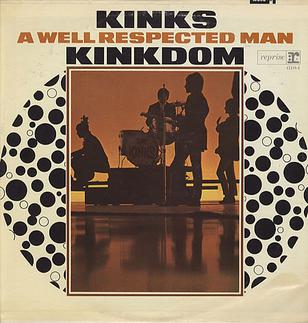
Kinkdom is a studio album by the English rock band the Kinks, released as their fourth album in the United States. It was issued by Reprise Records on 24 November 1965 in both mono and simulated stereo formats. It peaked at number 47 on the Billboard album chart.

"Picture Book" is a song by the English rock band the Kinks from their 1968 album The Kinks Are the Village Green Preservation Society. Written and sung by Ray Davies, the song's lyrics describe the experience of an ageing narrator flipping through a photo album reflecting on happy memories from "a long time ago". Recorded in May 1968, its cheerful sound is defined by the jangle of an acoustic twelve-string guitar and a disengaged snare drum. In continental Europe, the song was issued as the B-side of the album's lead single, "Starstruck", in November 1968. The same single was issued in the United States in January 1969, though it failed to appear in any charts.
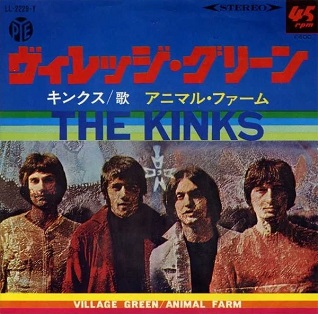
"Village Green" is a song by the English rock band the Kinks from their 1968 album The Kinks Are the Village Green Preservation Society. Written and sung by the band's principal songwriter, Ray Davies, the song was first recorded in November 1966 during the sessions for Something Else by the Kinks (1967) but was re-recorded in February 1967. Both the composition and instrumentation of "Village Green" evoke Baroque music, especially its prominently featured harpsichord played by session keyboardist Nicky Hopkins. Unlike most of the band's late 1960s recordings, it employs real orchestral instruments, including oboe, cello, viola and piccolo, as arranged by English composer David Whitaker.

Then Now and Inbetween is a promotional compilation album by the English rock band the Kinks. Reprise Records issued the album in July 1969 to journalists, radio program directors and disc jockeys in conjunction with the "God Save the Kinks" promotional campaign, which sought to reestablish the Kinks' commercial status in the US after their four-year ban on performing in the country.
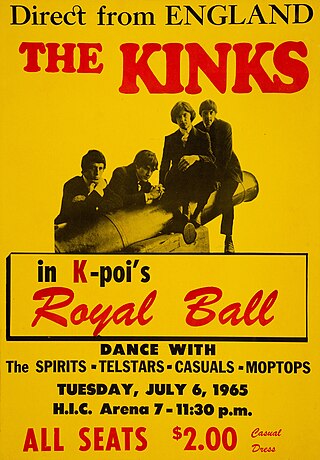
The English rock band the Kinks staged their first concert tour of the United States in June and July 1965. The sixteen concerts comprised the third stage of a world tour, following shows in Australasia, Asia and in the United Kingdom and before later stages in continental Europe. Initially one of the most popular British Invasion groups, the Kinks saw major commercial opportunity in the US, but the resultant tour was plagued with issues between the band, their management, local promoters and the American music unions. Promoters and union officials filed complaints over the Kinks' conduct, prompting the US musicians' union to withhold work permits from the band for the next four years, effectively banning them from US performance.
The English rock band the Kinks staged their fourth concert tour of the United Kingdom in April and May 1965. The thirty-three concerts comprised the second stage of a world tour, following shows in Australasia and Asia and before stages held later that year in the United States and continental Europe. After the Kinks had served as a support act during all of their previous tours, including during the first leg of their world tour, the 1965 UK engagements were the band's first as the headline act. Supporting groups included Goldie and the Gingerbreads and the Yardbirds.
